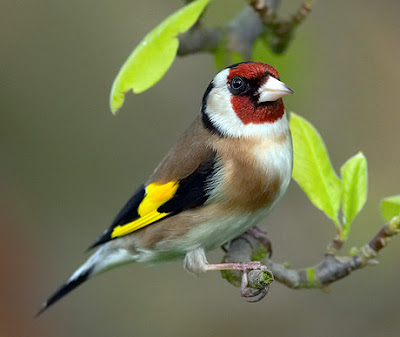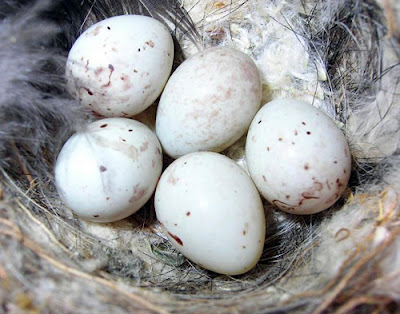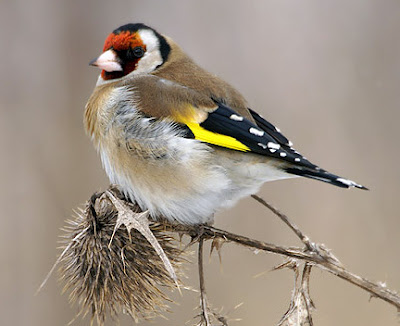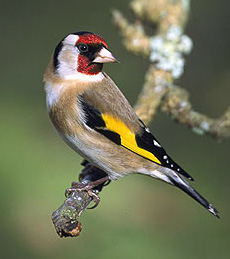Characteristics
Both the sexes are much alike, with a red face, black and white head, warm brown upperparts, white underparts with buff flanks and breast patches, and black and yellow wings. The ivory-coloured bill is long and pointed, and the tail is forked. Goldfinch in breading condition have a pure white bill, otherwise, will have a grey/black mark at the tip for the rest of the year. Juveniles have a plain head and a greyer back but are unmistakable due to the yellow wing stripe.
 Habitat
Habitat
Goldfinches are increasingly visiting birdtables and feeders in gardens, but they can be seen anywhere there are scattered bushes and trees, rough ground with thistles and other seeding plants. They use the thistledown when building nests in small trees in farmlands or orchards. They nest in the outer twigs of tall leafy trees, laying four to six eggs which hatch in 11-14 days.
 Behaviour
Behaviour
Goldfinch feed on small seeds such as thistles and teasels, but insects are also taken when feeding young. In the winter they regularly visit bird feeders.
 The Goldfinch’s song is a pleasant silvery twittering, it is a pleasant tinkling medley of trills and twitters, but always including the tri-syllabic call; a teLLIT-teLLIT-teLLIT.
The Goldfinch’s song is a pleasant silvery twittering, it is a pleasant tinkling medley of trills and twitters, but always including the tri-syllabic call; a teLLIT-teLLIT-teLLIT.
In earlier times, the Goldfinch was kept as a cage bird for its song.
B.A.C.









